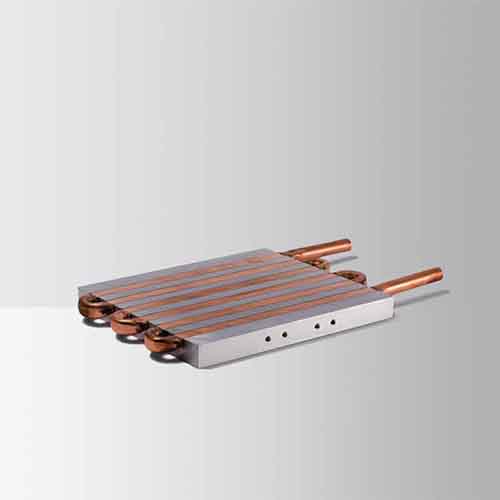In order to build the ball, a part of water is added to the sintering mixture. The amount of water added depends on the ore property. The concentrate is added with water of about 8%, and the powder ore is sintered with water of 4 to 5%. The change of moisture during sintering is in the process of sintering. Sinter output and quality have a great impact. For example, moisture condensation forms an over-wet zone, and the resistance of the layer increases, while destroying the finished pellet. In order to overcome the resistance and increase the sintering yield and quality, it is necessary to study the law of water evaporation and condensation.
(1) Mechanism of water evaporation
The evaporation of moisture during the sintering process can be divided into the following stages:
(1) Preheating stage. Due to the low temperature, the water content of the pellets evaporates slowly, the water content in the material does not change substantially, and the temperature slowly rises.
(2) Constant-speed drying stage. As the temperature rises, the vapor pressure (P H2O ) of the water is generated on the surface of the material. When the pressure is much lower than the saturated vapor pressure (P' H2O ) of the water in the high-temperature exhaust gas, that is, P H2O <P' H2O , the water on the surface of the material starts to be large. Evaporation.
(3) The boiling stage. The P H2O of the surface water vapor is equal to the total pressure P in the exhaust gas, ie P H2O = P, and the water evaporation reaches the most intense stage.
(4) Slow down drying stage. When the temperature of the material rises close to the temperature of the exhaust gas, the drying process slows down slowly. When P H2O = P' H2O , the drying stops. Due to the temperature drop in the exhaust gas, the P' H2O at this time is much lower than the above saturated vapor pressure P' H2O .
Formula for calculating water evaporation

Where W—the amount of water evaporated, gram;
Z———the time of drying or evaporation, hours;
C———coefficient, when the air velocity is less than 2 m/s, C=33 g/ m2 ; when the air velocity is >2 m/s, C=52 g/ m2 ;
F———surface area, meter 2 ;
P———standard atmospheric pressure, Pa;
P 1 ———actual atmospheric pressure, Pa;
P' H2O ———saturated vapor pressure, Pa;
P H2O — The vapor pressure of the existing water, Pa.
The surface area F, the difference between the vapor vapor saturation vapor pressure in the exhaust gas and the partial pressure of the water vapor of the material and the amount of evaporated water are highly dependent. Since both of the above values ​​are large during the sintering process, the drying zone is narrow.
The constant speed drying speed R ω can be obtained by the heat balance method:

Where ΔH ω — the heat of evaporation of water, kilojoules per kilogram;
R ω ———drying speed, kg/min;
H———the heat transfer coefficient of gas to material, kJ/ m2 · min · °C;
a——— evaporation area, m 2 ;
T g , T s ———temperature of gas and material, °C.[next]

Â
The drying speed of the deceleration drying zone, assuming that the descent is linear, can be obtained as shown in Figure 1:

Where W s ——— the moisture of the solid material, %;
W c ———critical moisture, %;
0<W s <W c
H T ———The width of the drying belt.
It can be known from the drying speed that the larger the particle size of the mixture and the smaller the specific surface area, the longer the drying time and the wider the drying belt. At the same time, the greater the airflow speed, the wider the drying belt. See Figure 2.

We provide either copper or stainless steel tubes pressed and locked into aluminium extruded plates that form reliable cold plates for low heat loads.
Embedded copper tube cold plate with low pressure drop for a variety of Applications, including:
Thermoelectric module cooling
Laboratory hot/cold plate
Analytical Instruments
Medical application
Any other application that requires uniform liquid temperature control
These cold plates are made of copper tubes pressed into aluminum cold plates.

Copper And Stainless Steel Tube Cold Plates
Stainless Steel Tube Cold Plates,Copper Tube Cold Plates,Tube Cold Plates,Cooling Plate
Xinxiang Zhenhua Radiator Co., Ltd. , https://www.thermictransfer.nl